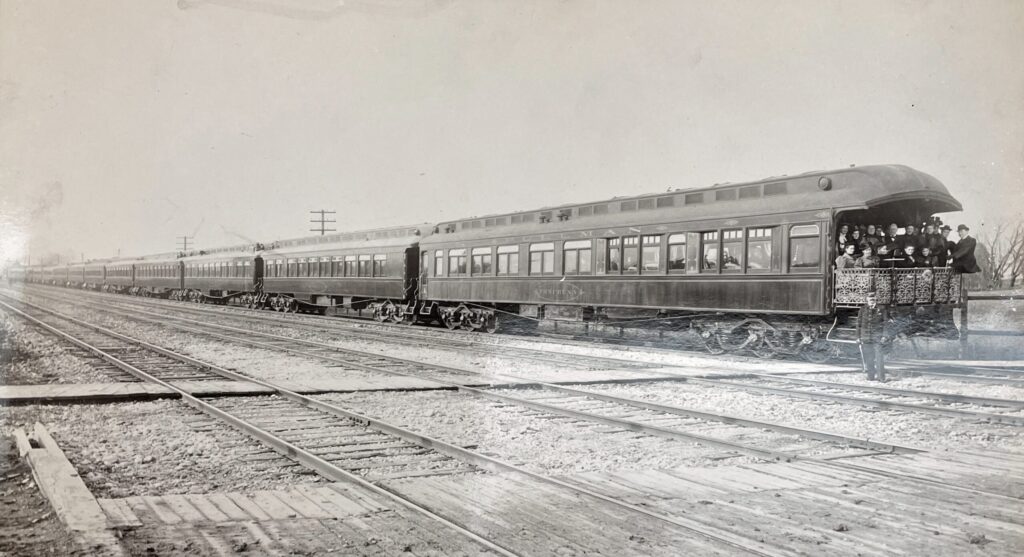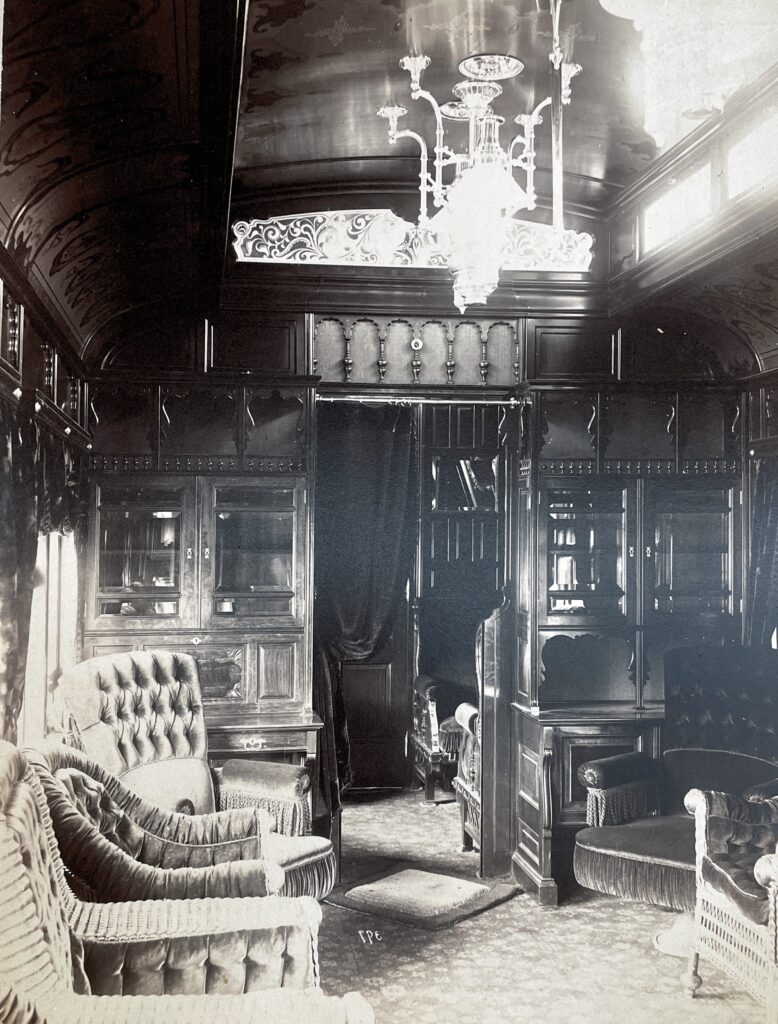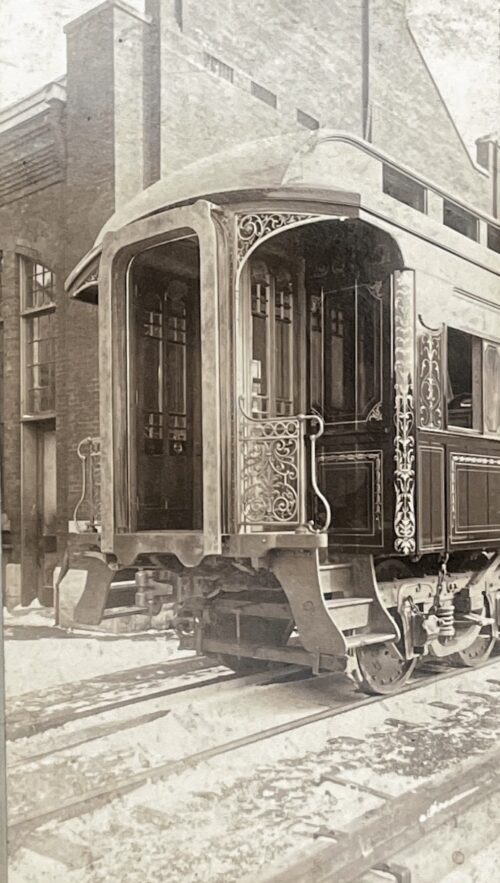By Laurie Toth

Tryphena was George Pullman’s private luxury train car that would take him, his family and friends anywhere they chose to go. The car would be attached to any train going to their destination. Sometimes this would involve the car to be detached and re-attached to another car. Mrs. Pullman (Harriet) often was accompanied by her two closest friends: Mrs. Horatio O. Stone and Mrs. William W. Kimball. Both were neighbors on Prairie Avenue. Most of their travels were to the Pullman estates of Fairlawn in New Jersey or Castle Rest in the Thousand Islands.
The Tryphena, like all the personal cars of George Pullman were created for him using his directions. It was carefully built in the Pullman factory, by only the most experienced of his workers. Once it was completed it was personally inspected by Mrs. Pullman who would give the first stamp of approval. The rule was, before the family could use the new car, George M. Pullman himself would need to inspect and give his final approval.

Entering the car at the rear entrance would be the Reception Room. This room was decorated in Oriental furnishings and carved wood. There was a desk in the corner, chairs and a lounge. But the most interesting feature in the room is the secret recess accessed by a spring which opens an elaborate carved sideboard. The sideboard is filled with fine wines and liquors. The Cognac imported from France in 1887 cost over $50.00 ($1,650 today) a quart. There were no brandies or whiskies under 50 years old in the sideboard. Also in this sideboard were cigars made with the finest tobacco and rolled according to George Pullman’s explicit directions. Each one was wrapped in leaves of different flavors and kept at least a year before being used. George Pullman’s favorite cigar was the one wrapped in orange leaves.
The next room was the Drawing Room. Decorated in floral decorations, this was considered the music room. It contained a rosewood piano, and some accounts say there was also an organ. Mrs. Pullman loved music and was an accomplished pianist. The room also contained a music stand, the twin boy’s violins and guitars. Besides playing the violin, George Jr and Sanger also played the flute.
The room following the Drawing Room were the sleeping quarters and there was no description of exactly what this looked like.
The Dining Room followed with the kitchen behind that. The Dining room was decorated in carved wood paneling. Carved tables, chairs and cabinets filled with the finest China, crystal and silver.
They were accompanied by a staff of no less than 8 people, which included two Cooks, a Butler, two waiters, a chambermaid, and two ladies maids.

Following the Tryphena, there was a separate train car for the six horses and a carriage. The horse’s stalls were padded and said to be more comfortable than some human beds!
The photo showing the train with the group of people at the rear is the wedding party of second daughter Harriet Pullman. Harriet married Frank Carolan of SanFrancisco.in 1892. Their wedding was at the Prairie Avenue Mansion. They returned to San Francisco on the Tryphena.
After George Pullman passed away in October 1897, his beloved Tryphena had a name change to the Monitor. It is unclear as to why the name was changed. It remained in the family for many years, finally being retired probably after Mrs. Pullman passed away in 1921. The story is it was stored in the Pullman shop until sometime in the 1940’s.
When Mrs. Pullman passed away in 1921 there were many floral bouquets sent. Among which was a replica of the Tryphena, then called the Monitor given by the Pullman employees.

If after reading this article you would love to travel in a private car, please check out the following website of the American Association of Private Railroad Car Owners. Amtrak does allow these cars to be attached to their trains!
For more information, please visit aaprco.com.






